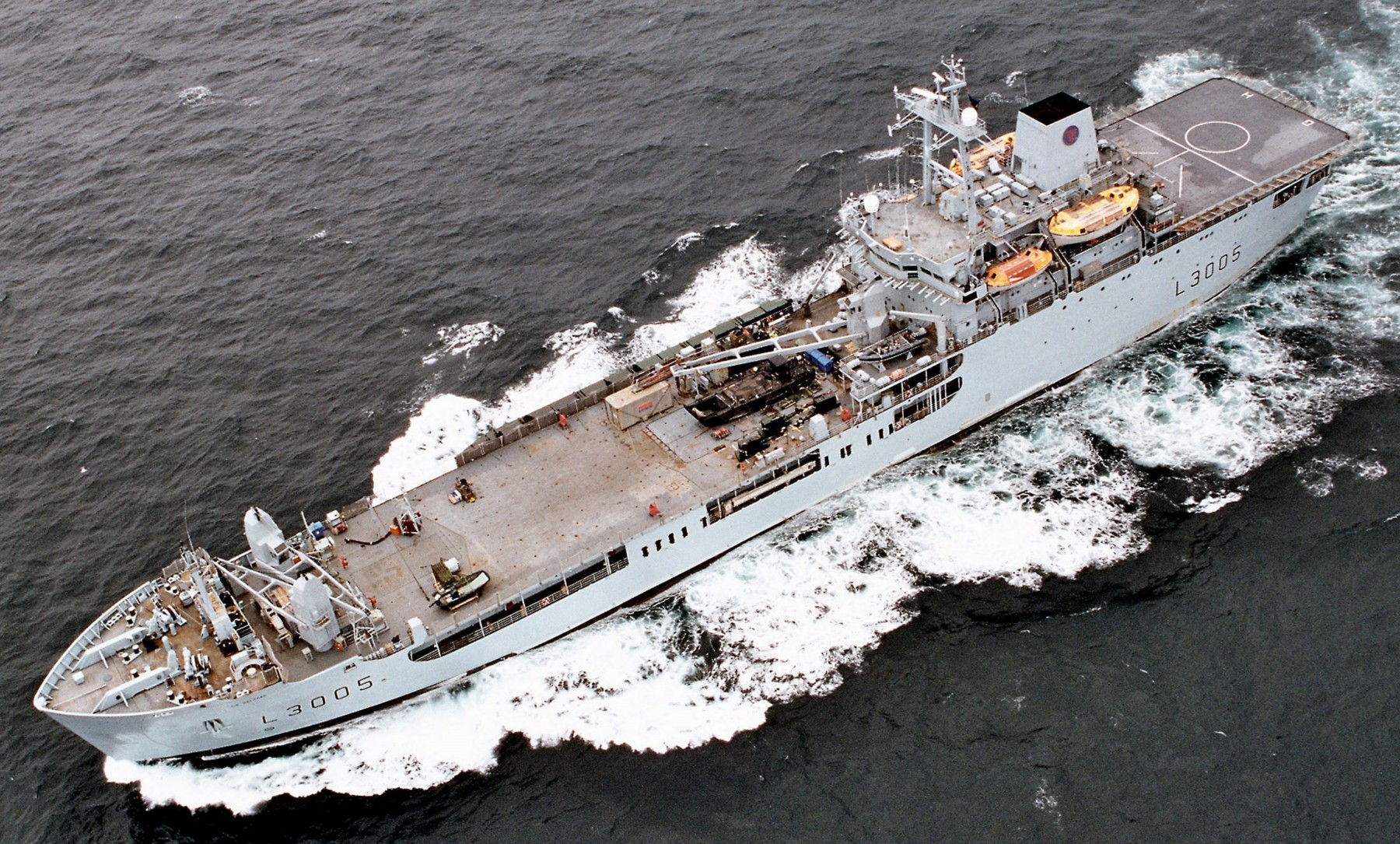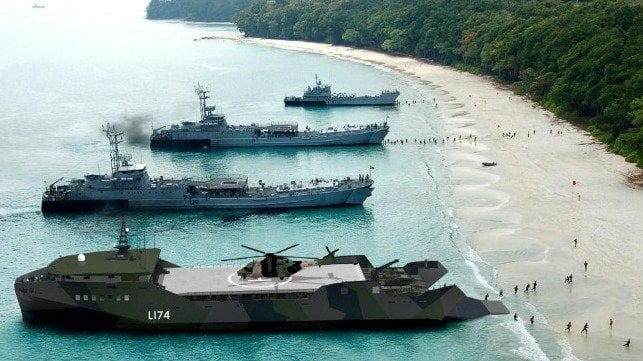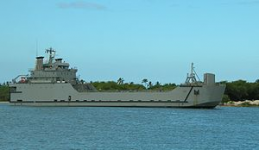- Reaction score
- 7,347
- Points
- 1,160

Vladimir Putin’s Amphibious Gambit Demonstrates Value Of New USMC Ship Design
A Russian amphibious sortie to the Black Sea earlier this month may help reinvigorate the U.S. Marine Corps' beleaguered effort to procure between 24 to 35 Light Amphibious Warships, or LAWs.
 www.forbes.com
www.forbes.com
Vladimir Putin’s Amphibious Gambit Demonstrates Value Of New USMC Ship Design
In January, as Russia sent an aged fleet of six diminutive landing craft on a cruise towards the Black Sea, a fearful Europe took notice. Confronted by ships that are, at best, modernized variants of America’s once ubiquitous World War II-era Tank Landing Ship, or LST, Sweden re-deployed their military, and Finland worried over their demilitarized Åland Islands. Beyond the Baltic Sea, countries dedicated some of their most modern military resources to track and escort the little band of ships around Europe, through the Mediterranean and towards Ukraine. Despite the uproar, all the little Russian fleet has done so far is to demonstrate the military relevance of utilitarian landing craft, offering the U.S. Marine Corps an opportunity to reinvigorate their flagging effort to get “old-school” LSTs back into the American fleet.
Russia’s motley amphibious expedition, a set of five Ropucha (Type 775) class LSTs and one new-but-obsolete Ivan Gren (Design 11711) class LST, are all rather small, displacing only between 4,000 to 5,000 tons apiece (To compare, a single American San Antonio (LPD-17) class amphibious assault vessel displaces 25,000 tons). The Russian LSTs are also quite old — the Russian task force includes the first Ropucha LSTs that are well into their fourth decade of service.
The West’s exaggerated response is a tacit admission that even small, militarily insignificant amphibious ships, if used creatively, can cause a lot of problems in the developed world’s littoral zones. The West’s close scrutiny of the Russian fleet suggests the vessels may even be carrying some exotic troublemakers—nuclear weapons, modern sea mines or fancy missiles.
Irregardless, Russia’s amphibious sortie shows what aggressive navies can do with second-string combatants. And it may well sway opinions as Washington mulls a Marine Corps request for an updated LST, called the LAW, or Light Amphibious Warship.
A return to the classic LST ship design makes sense. Humble LSTs were once a big part of the U.S. Navy. Over 1,000 were built during World War II alone, and, as they spread through the fleet, the simple, commodious ships were adopted for all sorts of critical-but-ancillary missions—serving as mobile hospitals, mine warfare support ships, repair ships, salvage tenders, depot ships, fire support platforms and more. The base design hasn’t changed much over the years. Like the ’70s-era Ropuchas, America’s War II-era LSTs weighed in at about 4,000 tons and were around 350 feet long. The LAWs, if built, will have similar dimensions.
Also, apparently Canada isn't the only place that commands are "handled".
In U.S. Navy circles, a huge debate exploded around the Marine Corps’ surprise effort to procure Light Amphibious Warships. The LAW, envisioned in 2019 as a class of 24 to 35 small-but-cheap $150 million amphibious ships, were proposed as a cost-effective means to move small groups of Marines around the Pacific. But, in Washington, the idea has gone over like a lead balloon, with many naval bureaucrats hoping the project will go away when the LAW’s biggest advocate, General David H. Berger, the smart, reform-minded Marine Corps commandant, retires.
Some theorists believe the LAW concept is already sunk. The Navy’s powerful shipbuilders, vested in building bigger and far more expensive amphibious assault vessels, despise the LAW concept and see it as an existential threat. The Navy’s high-end warfighters, disinterested in escort duties, scoff that the LAW is just a “Large, Slow Target,” leaving many Marines to wonder just how they’ll survive ashore if they are supported by the smaller, slower craft. Even Congress—which is eager to grow the Navy—seems skeptical.
Many D.C. insiders consider the LAW as something of a vanity project, dismissing it as a weakly thought out effort to keep the Marine Corps relevant. There’s also some ill will; Distributed Maritime Operations—a strategic framework to try and spread small warfighting platforms around areas of potential conflict, irking and vexing rivals—was a Navy concept, and yet, the Marine Corps has been far more successful in exploiting the idea, promoting the platform as a key enabler of their Expeditionary Advanced Base Operations concept.
The Marine Corps sees the LAW as a route to modern warfighting legitimacy—a way for expeditionary troops to support the fleet, using “mobile, low-signature, persistent, and relatively easy to maintain and sustain naval expeditionary forces” to “conduct sea denial, support sea control or enable fleet sustainment.” It is a risky proposal—akin to giving World War II Coast Watchers, operating in secret, often behind enemy lines, anti-ship guns and fleet support tasks. But the LAW, if built in numbers, gives the Marine Corps a way to engage in almost every single activity required to sustain a modern, island-hopping force.
No warfighting concept is perfect, but Washington’s disregard of the LAW is extremely short-sighted. In the worst case, the LAWs will be relegated to useful, utilitarian tasks, handling the myriad of things “big” Navy likes to pretend it doesn’t need. LAWs can certainly facilitate inter-theatre transport, and, at best, the LAW puts the Marines front-and center, where they can grab headlines while worrying away at rivals and fretting the opposition—just like Vladimir Putin is doing with his old and decrepit Ropuchas.
So will the LAW go the way of the Army's Tactical Airlifter (the C27J Spartan) or the Army's Operational Sealifter (the Spearhead JHSV-EPF)?
Is it just me that sees a similarity in the Canadian Militia debate? Institutions warring over turf and budget, externally and internally, creating cracks along the seams.
It seems obvious that there is utility in simple logistic solutions where quantity has a value all its own. But it has big opponents.
The AOPS has elements of the LAW if not the LST about it. Perhaps some more LST like variants might be worth considering.
If the RCN would deign to consider it.









